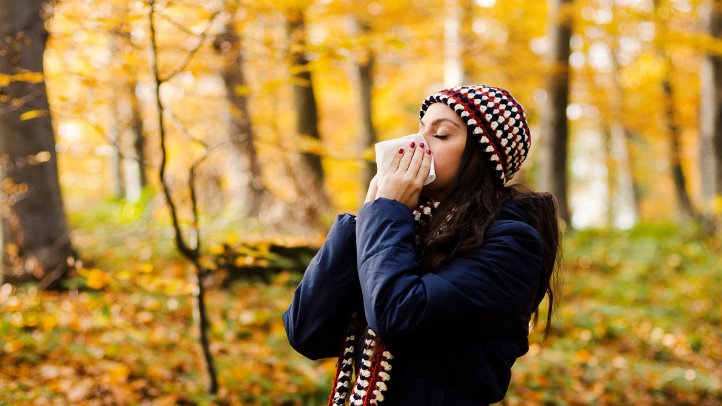


A lot of people love fall season for the crisp & cool air and the turning leaves. When you think of seasonal allergies, you may think spring. But for some people living with allergies, symptoms like a runny nose or itchy, watery eyes can be just as troublesome in the fall.
There are many who dread the coming of Fall due to their Fall allergies. Along with cooler weather and changing foliage, weeds and other plants release pollen into the air and outdoor molds grow under fallen leaves, both of which can trigger fall allergies. Ragweed, which produces pollen from August to November, triggers allergies in as many as 23 million Americans, according to the American College of Allergy, Asthma & Immunology.
As days grow shorter and temperatures drop, we also spend more time indoors with the windows closed, exposing ourselves to indoor allergens, such as dust mites and indoor mold. However, even if you have severe fall allergies, you can usually manage your symptoms and get back to enjoying your life — both inside and outside. These seasonal allergy management tips can help.
Best Ways to Fight Fall Allergies
Check Pollen levels
If pollen levels are high in your area, it’s best to limit your outdoor activity, especially during the morning, when pollen counts are highest. Keep your activities inside for a few days instead, if possible, to minimize your exposure to allergens during those days. You can check pollen counts at the American Academy of Allergy, Asthma & Immunology’s National Allergy Bureau.
Wear Protective Clothing
If you do have to go outside, wear long sleeves, pants, a hat, and sunglasses to keep pollen off your skin and out of your hair and eyes. If you’re doing fall yard work like raking or mowing — which can stir up pollen and mold — wear a protective face mask.
Dehumidifier
You may have heard that humidifiers can help with breathing, but dehumidifiers may actually be better if you are sensitive to dust or mold. Dust mites and molds flourish in a humid environment. Using a dehumidifier to keep humidity levels in your home low can help fight mold growth. The Asthma and Allergy Foundation of American recommends keeping humidity levels below 45 percent — 35 percent is even better.
Air Conditioner
This is another way to help remove moisture from the air. It’s especially important to use an air conditioner in your bedroom. It’s where you spend eight or more hours each night, so it’s critical to keep it clean and pollen-free to avoid allergies. Close the windows and keep the air conditioning on.
Change Air Filters Often
The first thing you should do is invest in HEPA air filters for your home. These will help keep most particulates out of your home! Additionally, make sure you change the filter out regularly to keep it from becoming compromised. This should cut down on airborne allergens in your house.
Medical Treatments
If your allergies prove a severe detriment, consider contacting your primary physician or an allergist. They can recommend different treatments to attempt to alleviate your symptoms. Examples of medical remedies for allergies are topical nasal sprays like Flonase. These medicines help reduce inflammation in the nasal lining.
Other medications that are often recommended include eye drops to help reduce itchiness. Anticongestants are also commonly used, and they are present in most nasal sprays. Many over-the-counter allergy drugs are now non-drowsy, long-lasting, and effective.
Avoid Trigger Foods
If you have an allergy to ragweed, you may also suffer from some related food allergies. Foods that could trigger a similar allergy response include bananas, cucumbers, sunflower and zucchini. Other foods, such as melons and chamomile tea, can also trigger similar symptoms in about a third of those with seasonal allergies.











No comments so far.
Be first to leave comment below.